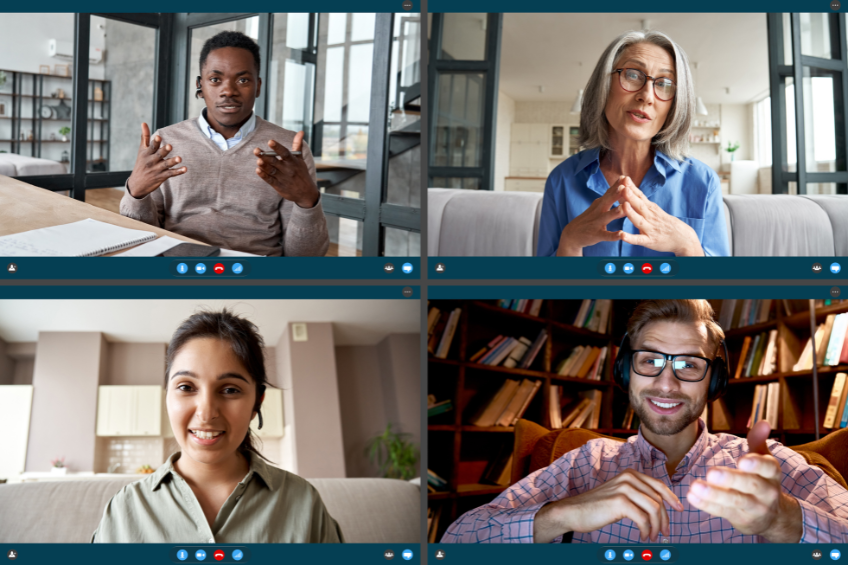
Certificate in Facilitation and Design
Helping employees succeed takes more than assigning tasks or offering quick advice. It means knowing how to guide learning, support performance, and create the right conditions for people to do their best work. But without a clear structure, even well-meaning efforts — like a coaching conversation, a team session, or an onboarding plan — can fall short. You may be asked to lead a discussion, support a struggling team member, or explain something complex, all without much preparation.
When organizations rely on informal or inconsistent approaches to development, performance gaps grow. Teams repeat mistakes, engagement drops, and progress slows. Leaders are expected to support growth and guide results, but the work can feel unclear and frustrating without the tools to do so.
This four-part program helps you develop the practical skills needed to guide learning and improve performance across your team. You’ll learn to assess needs, support skill development, and lead group conversations that build clarity and collaboration. Whether you’re facilitating a meeting, coaching a staff member, or sharing knowledge with your team, this program offers the tools and strategies to make your efforts more effective.
By the end of the program, you’ll be able to create supportive environments where learning and performance go hand in hand. You’ll have the confidence to lead with intention, communicate clearly, and provide day-to-day support that helps people grow and succeed.
This certificate program includes the following four workshops: Performance Development & Learning, Session Design, Advanced Facilitation Skills, and Facilitation in a Virtual Environment. Each workshop includes a post-workshop assignment.

- Apply a performance mapping process to identify and propose business goals and performance requirements, along with training and work environment needs.
- Use a five-step model to structure sessions logically and ensure smooth content delivery.
- Select activities and visual aids that reinforce key messages and maintain attention.
- Recognize how adults learn in the workplace and apply these principles to support real-time performance and growth.
- Use questioning, listening, and coaching techniques to encourage reflection, accountability, and development.
- Facilitate both in-person and virtual interactions with clarity, presence, and intention.
- Lead group discussions and handle challenging behaviours while staying neutral and respectful.
- Create supportive in-person and virtual environments by reading digital cues and encouraging discussion.

This program is for managers, supervisors, and professionals who support others through coaching, communication, or leadership. If your role involves helping people succeed, whether through one-on-one conversations, team discussions, or training, this program will give you practical tools to guide performance and support learning.
You should attend if you
- Are expected to train, coach, or guide others but feel unsure how to do it effectively
- Want to move beyond improvised training efforts and create sessions that are focused, engaging, and aligned with workplace needs
- Have led learning sessions that didn’t have the impact you hoped for
- Need tools to assess training needs, design sessions, and lead in both virtual and in-person environments
- Want to improve how you support employee performance and development
- Work in a leadership, HR, or learning and development role where strong facilitation and design skills are critical
By completing this program, you’ll have the confidence and tools to lead conversations, guide development, and create a work environment where people can learn, improve, and succeed.

This four-part certificate program blends practical facilitation theory with real-world application. Each session focuses on a key component of effective facilitation and design. You’ll work through realistic scenarios that mirror the challenges of supporting performance development in your organization.
Throughout the program, you’ll have structured opportunities to design facilitation plans, assess different approaches, and refine your strategies through feedback and reflection. Activities are designed to support critical thinking, build confidence, and help you apply facilitation techniques with purpose and clarity.
You’ll also take away a practical workbook with tools, examples, and checklists to use back on the job. You’ll complete a proof-of-learning assignment after each module to reinforce your learning and strengthen your application in the workplace.
Workshop activities include
- Planning and designing effective sessions that meet participant needs
- Assessing facilitation strategies using real-world case scenarios
- Exploring group behaviours and discussing strategies for support and inclusion
- Reviewing and applying frameworks for in-person and virtual facilitation
- Participating in small group discussion and peer coaching


